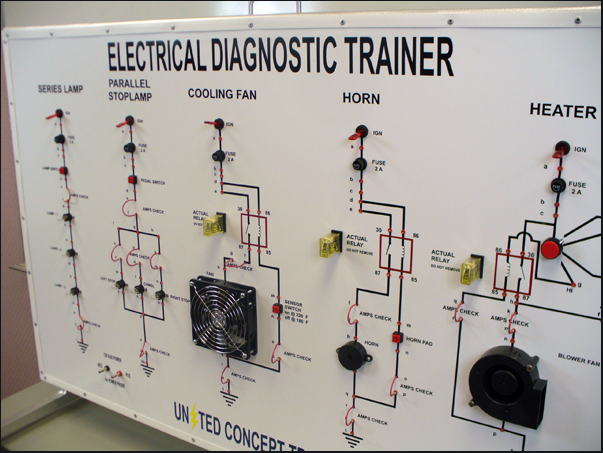Come Visit Us At APATS Booth #215 September 9th – 11th & Aviation Africa September 16th-17th Booth #64
Come Visit Us At APATS Booth #215 September 9th – 11th & Aviation Africa September 16th-17th Booth #64


When evaluating eLearning course creation solutions, it’s important to understand that there’s always a variety of tradeoffs to consider as part of the online training development process. A tradeoff is a situational decision which causes one item to increase in value while another one decreases. These decisions can be tough to make because there’s no magic formula that you can use to make an empirical decision.
Tradeoffs are very important in the eLearning field because it affects acceptability of the final product as well as development costs. Just about every aspect of the development cycle is subject to a tradeoff, but there are four that stand out above the rest:
At first glance, the choice of development platform is a no brainer – you use what you like the best. But is simplifying this decision in this manner really what is most cost effective? In many instances, I don’t think so. I recently learned about a training organization that developed their own online training courses using Flash. I’m not sure what led that organization to make this decision, but in retrospect, it was a bad one that’s going to cost them.
Since eLearning development is not their primary mission, they didn’t focus on the developments in the field. As a result, they have just recently discovered that their online training no longer works because they were created using Flash, and Flash no longer works in the browsers. Unfortunately, there’s no tool available that I’m aware of that will easily convert a Flash file into HTML5, so this organization is going to have to redo their courses using HTML5.
In the meantime, the costs are going up, and worse, they don’t have usable courses. This is precisely the reason we use a database for on our online courses. The course player is simply an interface to the database, and it will render any of our courses. When we transitioned from Flash to HTML5, we simply re-wrote the interface in HTML5, published it, and all of our courses were updated to the new technology in an instant.
Interactivity is one of those of terms that is raised when discussing the online training needs of a client. You’d be surprised at the wide range of definitions that are attached to this term. I remember one person who told me that interactivity was the act of “clicking somewhere on the screen and something happens after that.” In retrospect, this person was talking about an electronic version of the old analog system boards we used to have in training.

But if you really think about that definition, the act of clicking on the next button does the same thing: you click on it, the graphic and audio change, and something happened on the screen.
Another definition that was proffered was “clicking somewhere on the screen besides the next button, and this has to happen at least every 5 to 7 screens.”
One interesting fact that we’ve discovered over the years is that the use of videos and animated graphics timed with the audio seem to qualify as interactivity as well.
Each of these have different development costs:
Since the development cost directly affects the price paid by the customer, that customer needs to decide how important that interactivity is with respect to the underlying cost of the product.
3-D images are often used as a selling point. But realistically, is that worth the extra cost? For one thing, images are rendered on a 2-dimensional screen, so in order to make it appear as 3-D, you need to add curvatures and shadows to the various components. However, these additions substantially raise the cost of the final product. In addition, the determination of whether a graphic is 2-D or 3-D can be subjective: some people will see a 2-D object with a lot of extra fluff on it, whereas others will actually see a 3-D graphic.
My absolute favorite discussion point on tradeoffs relates to audio recordings. As I mentioned in my previous blog, we made the controversial decision to use Text to Speech (TTS) audio generated by neural networks. The decision was controversial because it went against norms.
For one thing, the conventional wisdom in eLearning is to use human voices. The question is: what is the reasoning behind that conclusion?
As I mentioned in my last blog, a few years ago, we experimented with using the state-of-the-art (for the time) TTS service. It offered three English voices:
The British voice was the best of the three, so we used that voice to record the audio for an upcoming presentation. During the presentation, I simply projected a module on a screen and went through almost half of the module, and I finally asked the audience how they liked the voice. The general consensus: they liked it, and even though the voice was a female British speaker, it was very understandable. I then informed them that it was Text to Speech, and everyone was impressed – no one changed their mind.
Fast forward a few years, and I made a similar presentation. The audio was even better than the British voice, but this time, I told the audience ahead of time that the voice was computer generated. During the presentation, I got the following comment: “I guess it does sound a bit mechanical.”
After that, the discussion shifted to the use of human narration. I explained to them that using human-generated audio would run up the cost significantly, but we could do it if they wanted: RD3 will efficiently manage this type of audio. The problem, though, was that they didn’t want to pay extra, and they even went so far as to ask if I could just use another employee to record the audio.
Unfortunately, using a human voice is always going to increase the development cost, no matter who does the recording. Since most of our customers accept the current audio, this particular customer had to absorb the extra development cost. In addition, what is acceptable for one person may not be acceptable for another person. Another issue is that subsequent changes to the course could require that some of the audio be redone, and the sound, tone, and pitch will definitely be different in the future, even if it’s recorded by the same person.
Just as the course designer has to make tradeoffs during the development, the customer needs to make similar tradeoffs during the decision-making process. The most effective way to work through these tradeoff decisions is by understanding the cost ramifications as well as the benefits you obtain in exchange for these costs.
Avsoft proudly provides pilot training solutions to airlines and ATOs around the world. We would love to help your organization as well. We offer a wide range of effective and proven pilot training products, all available here 24/7/365.